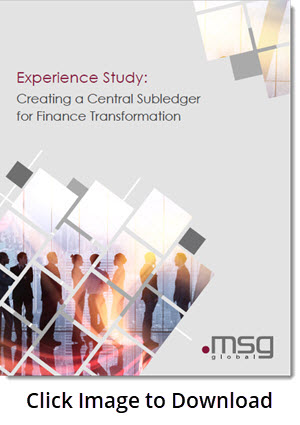Can a central subledger support the needs of accountants and actuaries or at least get them on the same side of the road?
Financial institutions are forced to undertake significant transformation initiatives in order to address their data and business process challenges. In my earlier post, I shared the ways in which a central subledger philosophy at the core of the finance transformation can drive focused and strategic change across the organization. And while we can all agree that the "transformation" journey is not only about the technology, I believe these unprecedented times make it apparent just how much we rely on it, primarily to give us the data to understand the present state, to predict the future one, and to act towards it.
That’s the analytical insight we so desperately need to cope with the pandemic. But it’s the same analytical insight financial organizations need to assess and improve their overall performance. We are more than ever aware of the importance of timely, reliable, and consistent information to make decisions for ourselves, our families, and our businesses. And financial institutions will keep prioritizing the importance of getting such analytical insights from their financial data.
Two Sides of a Coin
Sounds simple, right? But when we look at insurance companies, we notice they are struggling to reach a common understanding of what their "financial data" entail and draw the line between their core financial data and their actuarial data. Their accounting and actuarial business units often underestimate each other’s importance in the financial analytics.
But the fact of the matter is they’re sides of the same coin. Accounting results can’t be complete or accurate without actuarial estimations of the future risks. On the other side, actuaries can’t make their estimations accurately and completely without looking into what P&L statements look like for different products and services.
The Art of the Possible
Instead of discussing what data is more important — accounting or actuarial — what if insurance companies could rely on a single technology that equally supports both? A technology that:
- Establishes common data definitions throughout the organization.
- Ensures data is available, traceable, consistent, timely, and secure.
- Brings data to a common reporting platform and enables centralized accessibility to the details of all financial events.
- Establishes a central accounting rules repository.
There are plenty of great technologies that could enable that, but in the context of financial organizations, a financial subledger like the SAP Financial Products Subledger (FPSL) is just the right tool.
 One of the highest-ranking U.S insurers already tackled these questions, and I had the opportunity to help them implement a central financial subledger as part of their finance transformation program. It was an inspiring experience, and if you would like to read more about the key takeaways, click the image at right to download my Experience Study: Creating a Central Subledger for Finance Transformation.
One of the highest-ranking U.S insurers already tackled these questions, and I had the opportunity to help them implement a central financial subledger as part of their finance transformation program. It was an inspiring experience, and if you would like to read more about the key takeaways, click the image at right to download my Experience Study: Creating a Central Subledger for Finance Transformation.




